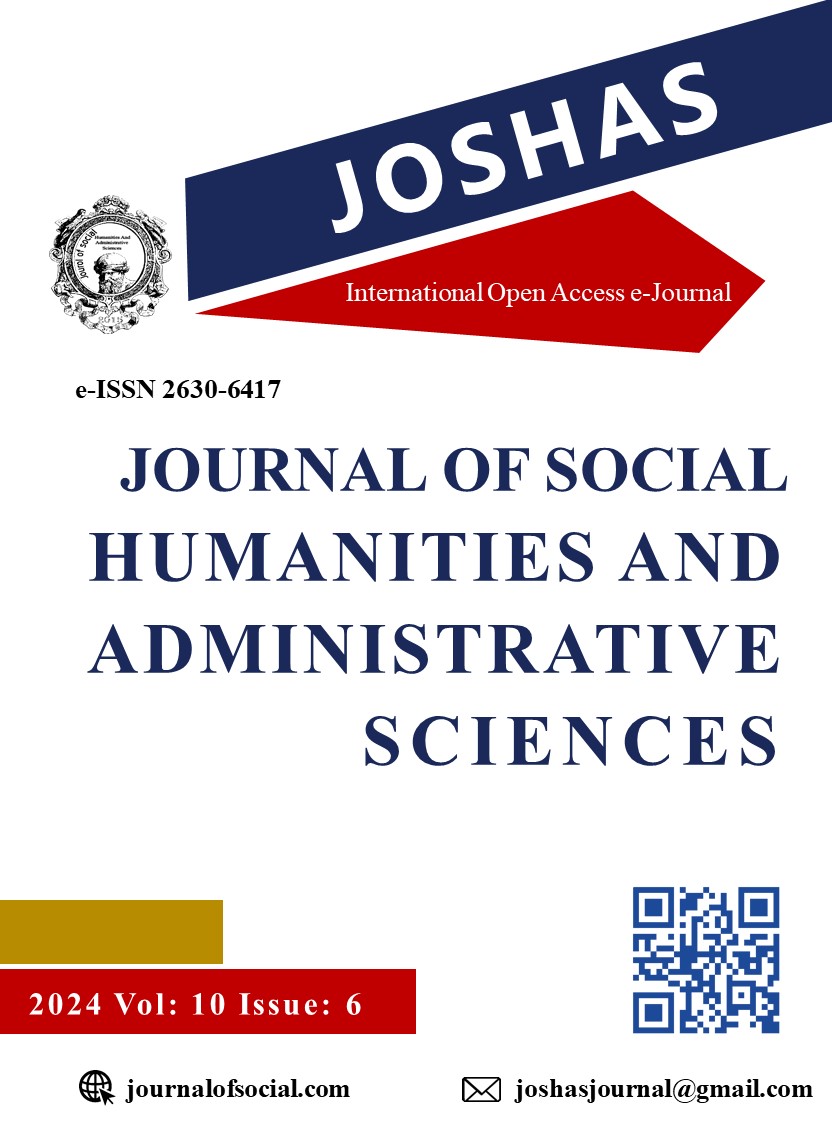Author :
Abstract
Görsel retorik, iletişimin görsel unsurlarla sağlandığı ve izleyiciyi etkileme amacı taşıyan bir alan olarak modern toplumda giderek daha önemli hale gelmiştir. Özellikle reklamcılık, medya, eğitim ve politika gibi alanlarda yaygın olarak kullanılmakta ve çeşitli disiplinler tarafından araştırma konusu olmaktadır. Grafik tasarımda görsel retorik, mesajların etkili bir şekilde iletilmesi, izleyicinin dikkatinin çekilmesi ve duygusal tepkilerin uyandırılması açısından büyük önem taşımaktadır. Bu bağlamda araştırma, görsel retoriğin afiş tasarımlarındaki rolünü ve tarihsel gelişimini incelemektedir. Görsel retorik, özellikle 19. ve 20. yüzyılın önemli afiş tasarımlarında kullanılan retorik stratejilerin (ethos, pathos, logos) izleyici üzerindeki etkilerini değerlendirmek amacıyla ele alınmıştır. Afişlerin kültürel ve tarihsel bağlamları dikkate alınarak, mesajların iletilmesinde kullanılan görsel unsurların işlevselliği ve estetiği detaylı bir şekilde incelenmiştir. Araştırma bulguları, afişlerde kullanılan retorik stratejilerin izleyiciyi etkileyerek ikna etmede etkili olduğunu göstermektedir. Pathos stratejisi, izleyicinin duygularını harekete geçirerek güçlü bir etki yaratırken, logos stratejisi mantıklı ve rasyonel argümanlarla izleyiciyi ikna etmektedir. Ethos stratejisi ise güvenilirlik ve otorite hissi vererek izleyicinin güvenini kazanmaktadır. Afişlerde renk kullanımı, tipografi, kompozisyon ve görsel metaforlar gibi unsurların dikkatlice seçilmesi, izleyicinin mesajı daha etkili bir şekilde almasını sağlamaktadır. Ayrıca, görsel retorik stratejilerinin afiş tasarımlarının tarihsel gelişimindeki etkisi örneklerle ele alınarak incelenmiştir. 19. yüzyılda afişlerde genellikle basit ve doğrudan mesajlar kullanılırken, 20. yüzyılda daha karmaşık ve metaforik anlatımların öne çıktığı görülmüştür. Bu değişim, sanatçılar ve tasarımcıların izleyicinin görsel okuryazarlığını ve eleştirel düşünme becerilerini kullanarak mesajlarını iletmeye odaklanmalarına neden olmuştur. Bu bağlamda retorik ve görsel retorik stratejileri, afiş tasarımlarının izleyici üzerindeki etkisini artırmak için kullanılan araçlar olup, mesajların daha etkili bir şekilde iletilmesini ve izleyiciyle güçlü bir bağ kurulmasını sağlamaktadır.
Keywords
Abstract
Visual rhetoric has increasingly gained importance in modern society as a field where communication is achieved through visual elements with the aim of influencing the audience. It is widely utilized in various domains such as advertising, media, education, and politics, and has become a subject of study across multiple disciplines. In graphic design, visual rhetoric plays a crucial role in the effective communication of messages, capturing the audience’s attention, and evoking emotional responses. This research examines the role and historical development of visual rhetoric in poster design. Specifically, it addresses the use of rhetorical strategies (ethos, pathos, logos) in significant poster designs from the 19th and 20th centuries, assessing their impact on the audience. By considering the cultural and historical contexts of posters, the functionality and aesthetics of the visual elements used in conveying messages have been thoroughly analyzed. The findings of the research indicate that the rhetorical strategies employed in posters are effective in persuading and influencing the audience. The pathos strategy creates a strong impact by evoking emotional responses from the audience, while the logos strategy persuades through logical and rational arguments. The ethos strategy, on the other hand, gains the audience’s trust by evoking a sense of credibility and authority. Careful selection of elements such as color, typography, composition, and visual metaphors in posters enables the audience to receive the message more effectively. Additionally, the research explores the impact of visual rhetoric strategies on the historical development of poster design, supported by examples. While posters in the 19th century generally employed simple and direct messages, the 20th century saw the rise of more complex and metaphorical narratives. This shift led artists and designers to focus on utilizing the audience's visual literacy and critical thinking skills in conveying their messages. In this context, rhetorical and visual rhetoric strategies serve as tools that enhance the effectiveness of poster design, allowing for the more efficient communication of messages and fostering a strong connection with the audience.





